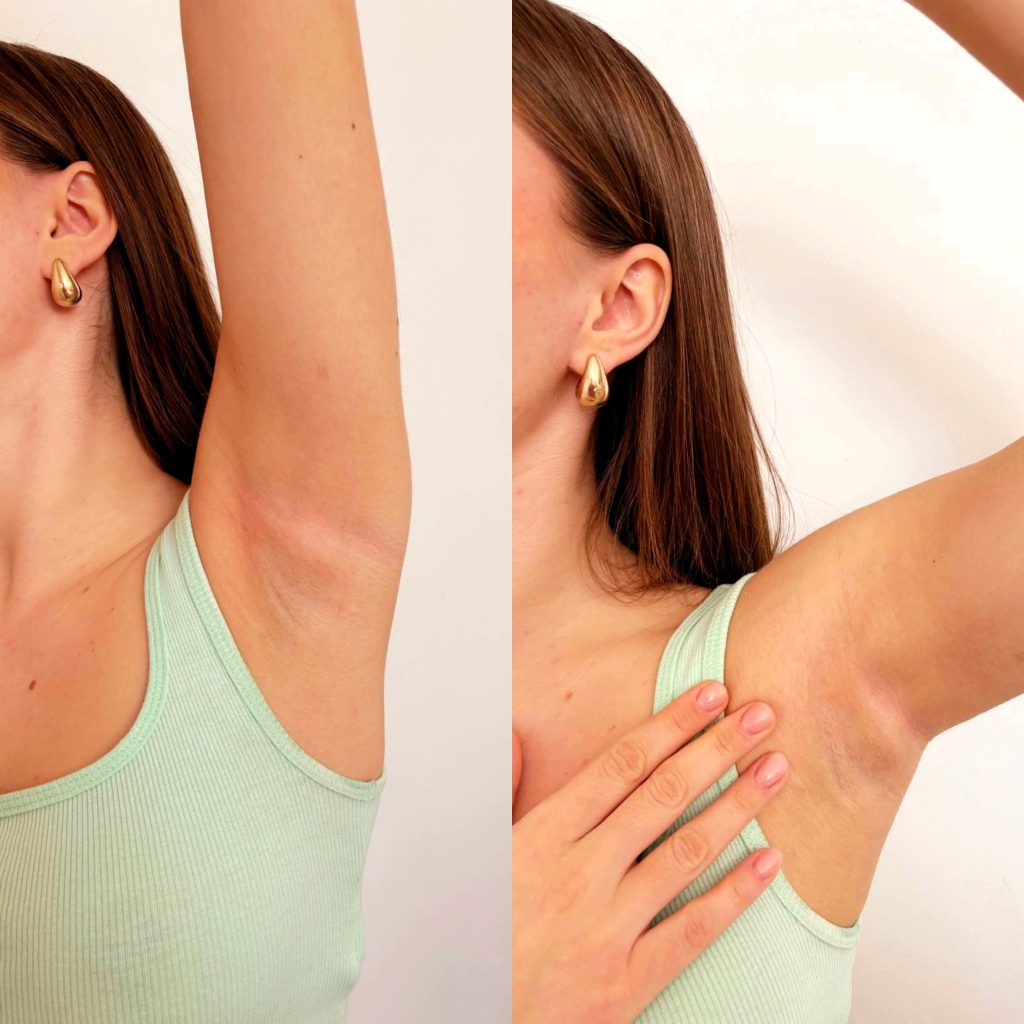Can Hair Removal Affect Sweating? What Do Studies Say?
Blog BackTable of Contents:
- How Does Sweating Work?
- Does Hair Removal Affect Sweat Glands?
- Studies on the Impact of Hair Removal on Sweating
- Why Does It Feel Like You Sweat Less After Hair Removal?
- Can Hair Removal Affect Sweat Odor?
- Hair Removal and Excessive Sweating (Hyperhidrosis)

Hair removal is a popular treatment that helps in getting rid of unwanted hair from various parts of the body, including areas particularly prone to sweating, such as the armpits. The question of whether removing hair can affect the intensity of sweating is often raised by both clients and experts. In this article, we will explore whether there is a connection between hair removal and the sweating process, and what scientific studies have to say on the matter.
How Does Sweating Work?
Sweating is a natural process that regulates body temperature. Sweat glands are located in the skin and release sweat in response to an increase in body temperature or stressful situations. There are two main types of sweat glands: eccrine glands and apocrine glands. Eccrine glands are found on most of the body’s surface and produce watery sweat that helps cool the body. Apocrine glands, on the other hand, are mainly found in areas like the armpits, groin, and on the scalp. They secrete sweat with a more oily consistency, which can be broken down by bacteria, leading to unpleasant odor formation.
Does Hair Removal Affect Sweat Glands?
The hair growing on the skin does not have a direct impact on the function of sweat glands. From a medical standpoint, these glands are not removed or damaged during hair removal treatments, whether we are talking about waxing, sugaring, laser hair removal, or other methods. Sweat glands are located in deeper layers of the skin, meaning that hair removal treatments, which only remove the hair or hair follicles, do not interfere with their function.

Studies on the Impact of Hair Removal on Sweating
Most studies available indicate that hair removal does not change the amount of sweat produced. In one study conducted on individuals who regularly removed armpit hair, it was confirmed that the amount of sweat secreted did not change after hair removal. The only change observed was in the perception of comfort and freshness – participants felt that they were sweating less, although physically, the sweating process remained the same.
Why Does It Feel Like You Sweat Less After Hair Removal?
Although hair removal does not affect the sweat glands, removing hair, especially from the armpits, can make sweat evaporate more quickly from the surface of the skin rather than getting trapped in the hair. Body hair, particularly in areas like the armpits, can act as "traps" for sweat, holding it on the surface of the skin. After hair removal, when the skin is smooth, sweat has the chance to evaporate faster, giving the impression that the body is sweating less.
Can Hair Removal Affect Sweat Odor?
Hair in areas such as the armpits and other parts of the body where apocrine glands are located can contribute to the development of unpleasant body odor. This is because the hair traps sweat, giving bacteria more time to break down the substances in it, leading to odor. Studies show that removing hair, especially in the armpit area, can help reduce the intensity of sweat odor, which in turn can improve comfort and the feeling of freshness.

Hair Removal and Excessive Sweating (Hyperhidrosis)
For individuals suffering from excessive sweating, known as hyperhidrosis, removing hair can be beneficial but does not address the root of the problem. Hyperhidrosis is related to the overactivity of sweat glands and requires specialized treatment, such as botox injections or pharmacological therapies. Hair removal can only help manage the effects of excessive sweating by making it easier for sweat to evaporate from the skin and improving hygiene, but it does not reduce the amount of sweat produced.








